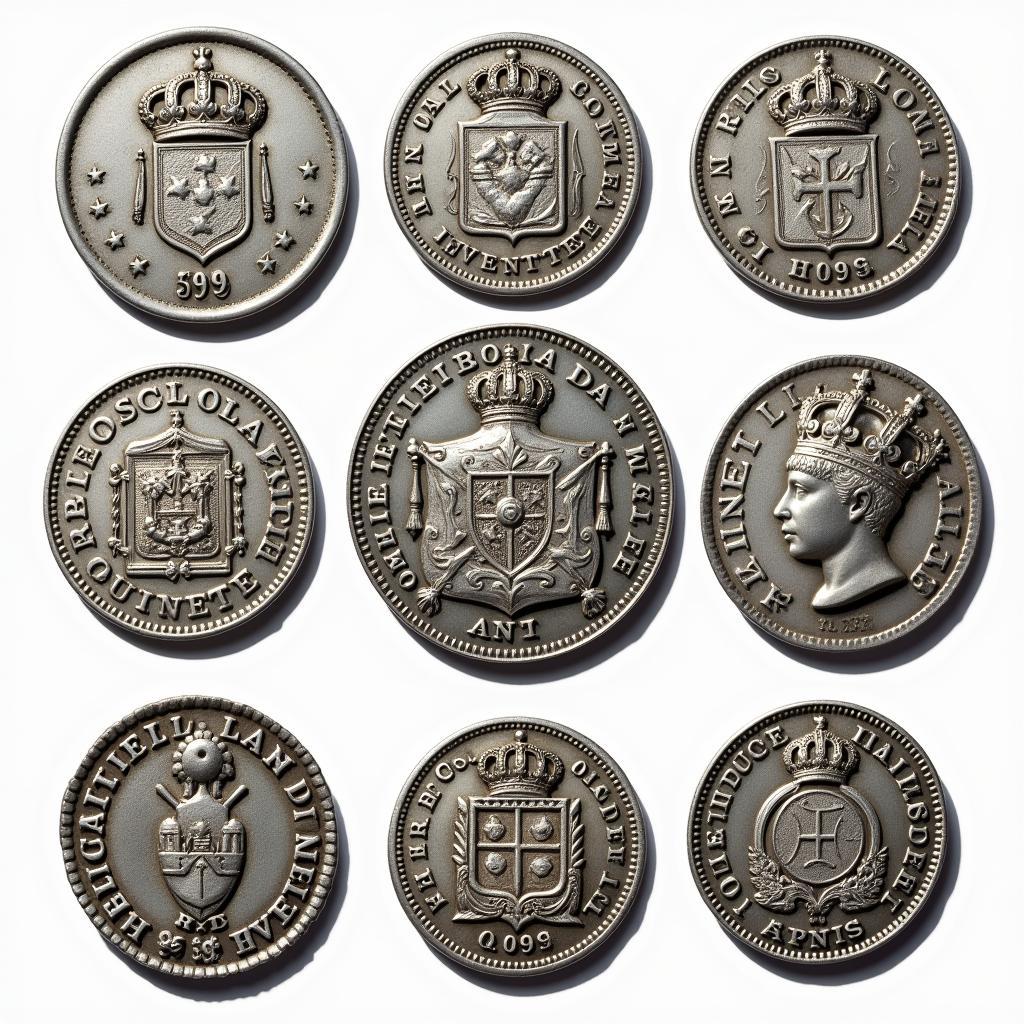Philippine Coins And Bills represent the country’s rich history and culture. This guide explores the evolution, designs, and security features of the Philippine Peso, providing a comprehensive understanding of its various denominations.
Exploring the World of Philippine Currency
The Philippine peso, represented by the symbol “₱” and the ISO code “PHP,” is the official currency of the Philippines. From colorful banknotes depicting national heroes and landmarks to intricate coin designs showcasing national symbols, Philippine money tells a story. This journey through the world of Philippine currency delves into its past, present, and future.
The History of Philippine Coins and Bills
The history of Philippine coins and bills is deeply intertwined with the country’s journey through colonization, independence, and modernization. Pre-Hispanic bartering systems evolved into Spanish colonial coinage, eventually giving way to the modern Philippine peso.
Pre-Colonial Currency
Before Spanish colonization, various forms of barter and trade existed, utilizing commodities like gold, rice, and textiles.
Spanish Colonial Era
The Spanish introduced coins like the silver real, which became the prevalent currency. These early coins often bore Spanish royal emblems.  Spanish Colonial Coins in the Philippines
Spanish Colonial Coins in the Philippines
The Modern Philippine Peso
The modern Philippine peso emerged after independence, with various series of banknotes and coins issued, reflecting the nation’s evolving identity and economic progress. The current series features prominent Filipinos and significant natural and historical landmarks.
Understanding Philippine Coin Denominations
Philippine coins come in various denominations, each with unique designs and features.
- 1 Sentimo: Often featuring a stylized representation of the national flower, the sampaguita.
- 5 Sentimos: Typically showcasing the iconic Mayon Volcano.
- 10 Sentimos: Commonly bearing the image of Lapu-Lapu, a national hero.
- 25 Sentimos: Often displaying the image of former President Manuel Quezon.
- 1 Peso: Frequently featuring the current Philippine coat of arms.
- 5 Pesos: Often depicting Andrés Bonifacio, another prominent national hero.
- 10 Pesos: Usually showcasing Apolinario Mabini, a key figure in Philippine history.
Decoding Philippine Banknote Denominations
Philippine banknotes boast vibrant colors and depict key figures and landmarks, offering a glimpse into the nation’s history and culture.
- 20 Pesos: Often showcasing Manuel L. Quezon and the Malacañan Palace.
- 50 Pesos: Typically depicting Sergio Osmeña and the National Museum Complex.
- 100 Pesos: Commonly featuring Manuel Roxas and the Bangko Sentral ng Pilipinas.
- 200 Pesos: Often showcasing Diosdado Macapagal and the Barasoain Church.
- 500 Pesos: Frequently depicting Corazon Aquino and Benigno Aquino Jr., alongside EDSA People Power Revolution imagery.
- 1000 Pesos: Usually featuring Jose Abad Santos, Vicente Lim, and Josefa Llanes Escoda, alongside World War II imagery.
 Philippine Banknotes of Different Denominations
Philippine Banknotes of Different Denominations
Security Features of Philippine Coins and Bills
Both coins and banknotes incorporate various security features to combat counterfeiting. These include watermarks, security threads, and microprinting.
According to Maria Santos, a numismatist at the National Museum of the Philippines, “The intricate designs and security features of Philippine currency are a testament to the country’s commitment to preserving the integrity of its financial system.”
Philippine Coins and Bills: A Collector’s Perspective
For collectors, Philippine coins and bills offer a fascinating glimpse into the country’s history and evolution. Rare coins and banknotes can be valuable additions to any collection.
“Collecting Philippine currency is more than just a hobby; it’s a journey through the nation’s history,” says Carlos Reyes, a seasoned currency collector.
Conclusion
Philippine coins and bills are more than just mediums of exchange; they are symbols of the nation’s history, culture, and identity. Understanding their denominations, designs, and security features provides valuable insights into the rich tapestry of the Philippines. Explore the fascinating world of Philippine coins and bills and discover the stories they tell.
FAQ
- What is the smallest denomination of Philippine currency? (1 Sentimo)
- Who is featured on the 1000 Peso bill? (Jose Abad Santos, Vicente Lim, and Josefa Llanes Escoda)
- What is the symbol for the Philippine peso? (₱)
- What are some security features found on Philippine banknotes? (Watermarks, security threads, and microprinting)
- Where can I find information about collecting Philippine currency? (Numismatic societies, online forums, and museums)
- What is the highest denomination of Philippine currency? (1000 Pesos)
- Where can I exchange foreign currency for Philippine pesos? (Banks, money changers, and authorized exchange centers)
Common Scenarios and Questions
- Traveling to the Philippines: What currency should I bring? Where can I exchange it?
- Collecting Philippine Currency: How can I start a collection? Where can I find rare coins and banknotes?
- Counterfeit Detection: How can I identify counterfeit Philippine currency?
Related Articles and Resources
- History of the Philippine Peso
- Security Features of Philippine Currency
- Collecting Philippine Coins and Banknotes
Khi cần hỗ trợ hãy liên hệ Số Điện Thoại: 0372960696, Email: [email protected] Hoặc đến địa chỉ: 260 Cầu Giấy, Hà Nội. Chúng tôi có đội ngũ chăm sóc khách hàng 24/7.

